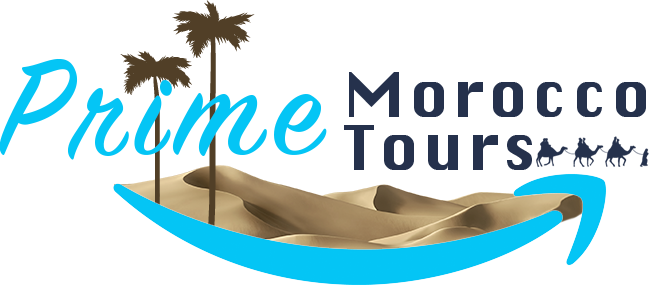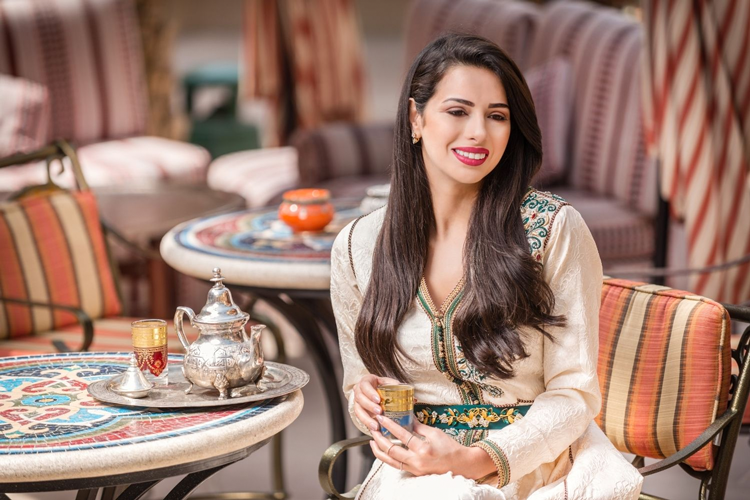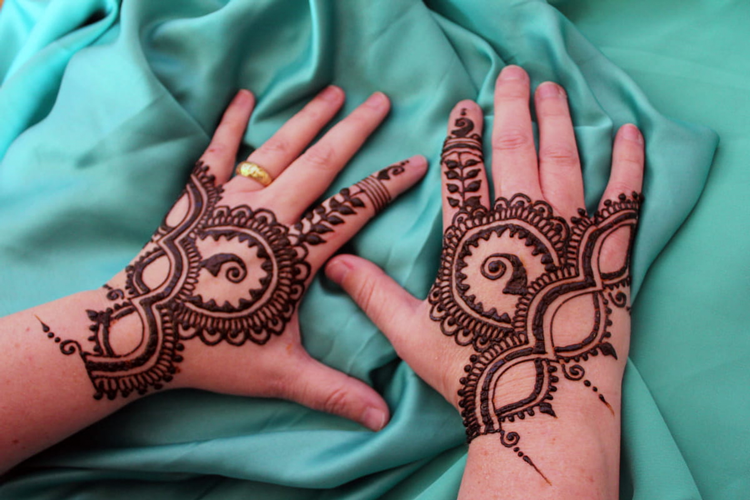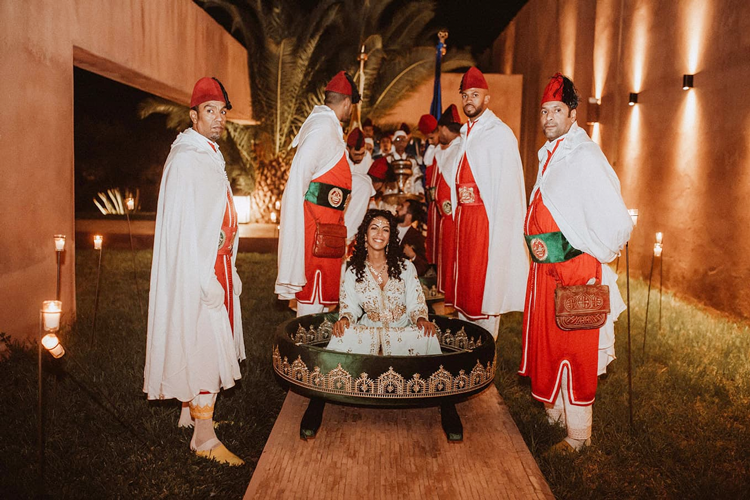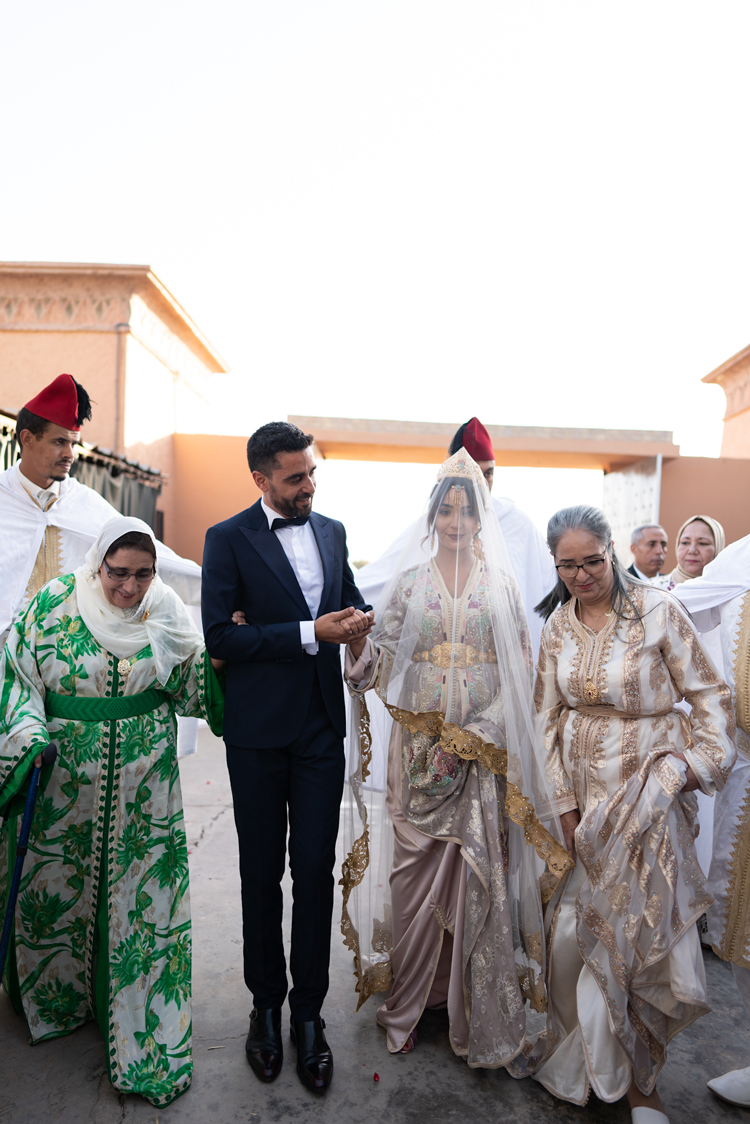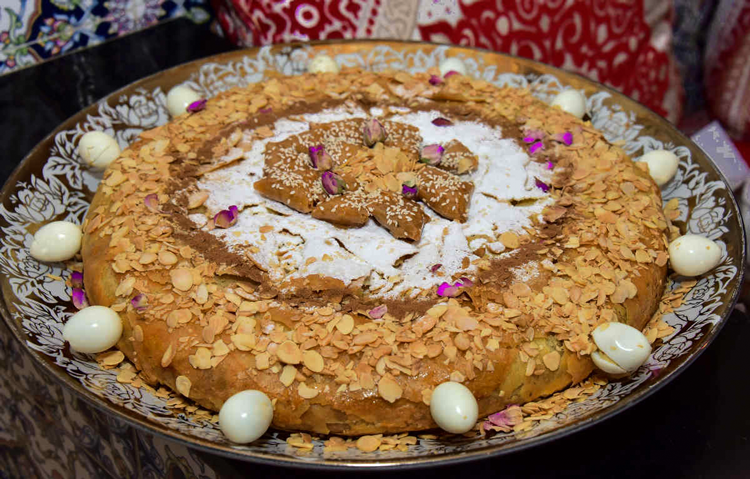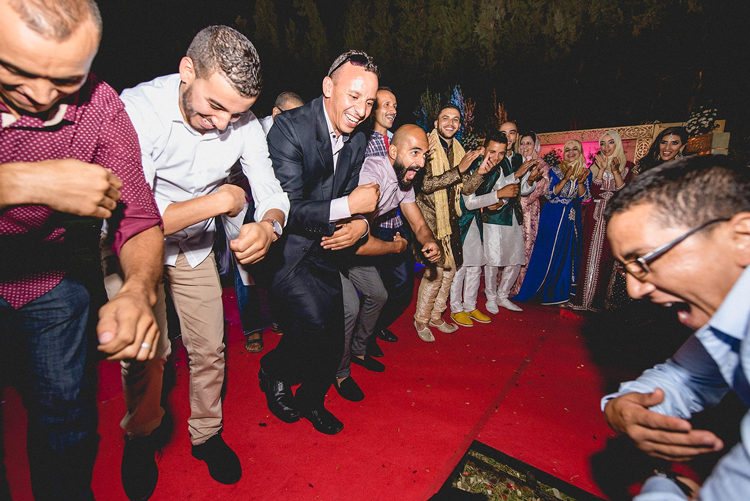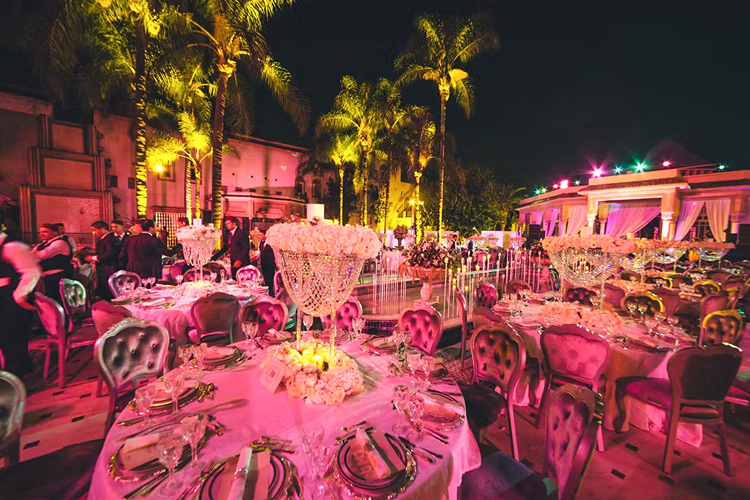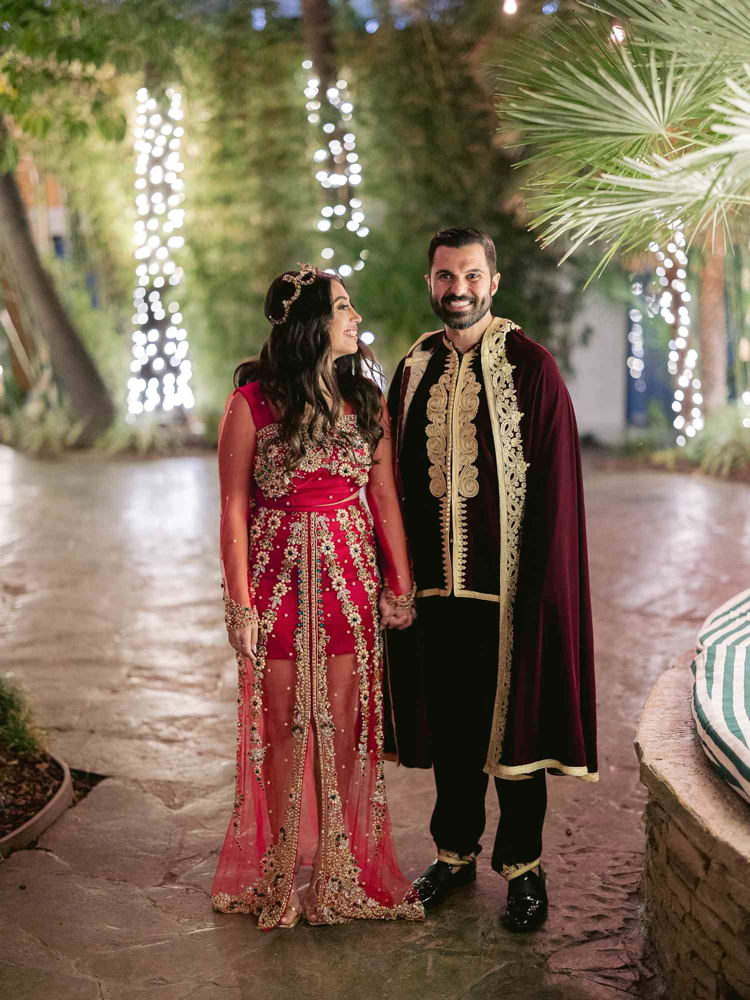Moroccan Wedding Ceremony: Traditions and Rituals
Moroccan weddings are grand, vibrant, and rich in tradition, offering a glimpse into the country’s diverse cultural tapestry. These celebrations are steeped in rituals that reflect Morocco’s Islamic beliefs, Berber heritage, and Arab-Andalusian influences, creating a unique fusion of customs and practices that have been passed down through generations. A Moroccan wedding isn’t just a union between two individuals; it’s a celebration of families, a symbol of community, and an expression of joy that can last for days.
In this blog, we’ll explore the key traditions and rituals that make a Moroccan wedding ceremony so memorable.
Experience the Magic of Moroccan Weddings
Step into a world of timeless traditions, joyful rhythms, and vibrant colors. Whether you’re dreaming of attending an authentic Moroccan celebration or incorporating elements of this rich culture into your own event, let us take you there. Discover the beauty, the rituals, and the unforgettable atmosphere of Moroccan weddings—where every moment tells a story.
Join us for a cultural journey you’ll never forget. Book your Moroccan experience today!
The Pre-Wedding Rituals
Moroccan weddings are not one-day events; they are multi-day celebrations that begin well before the actual wedding day. The following are some of the important pre-wedding rituals that play a key role in preparing for the big day:
1. The Engagement (Khitba)
The engagement ceremony, or khitba, is the first step in the marriage process. It is an intimate family gathering where the groom’s family formally asks for the bride’s hand in marriage. Although the bride and groom usually know each other before this event, the khitba is still a traditional occasion where both families meet and discuss the marriage arrangements.
During this gathering, the groom may present the bride with a symbolic gift, often gold jewelry, to seal the engagement. The families then agree on the wedding date, venue, and other important aspects of the ceremony. Traditionally, a religious figure, known as a fqih, might be present to recite blessings and prayers for the couple’s future.
2. The Henna Ceremony (Hammam and Henna)
One of the most cherished pre-wedding rituals in Moroccan culture is the henna ceremony, which is usually held a day or two before the wedding. The bride and her female relatives and friends gather for a day of pampering that starts with a visit to the hammam, a traditional Moroccan bathhouse. The hammam ritual is considered purifying and cleansing, symbolizing the bride’s preparation for her new life.
Afterward, the bride’s hands and feet are decorated with intricate henna designs in a joyful ceremony filled with singing, dancing, and blessings. Henna is believed to bring good fortune and ward off evil spirits, and the application of these beautiful patterns is accompanied by prayers for a happy and prosperous marriage. The darker the henna, the more auspicious it is considered to be for the bride’s future.
The henna ceremony is a deeply symbolic event and an opportunity for the women of both families to bond, share stories, and give the bride advice on married life.
The Wedding Day
The Moroccan wedding day is filled with vibrant celebrations, traditional attire, music, and rituals that reflect the couple’s unique cultural background. Depending on the region, some customs may vary, but most Moroccan weddings follow a general structure that includes the following key elements:
1. The Bride’s Attire
One of the most striking aspects of a Moroccan wedding is the bride’s wardrobe. Unlike Western weddings, where the bride typically wears a single white gown, a Moroccan bride changes outfits several times throughout the evening, with each outfit representing different regions of Morocco.
The caftan or takchita, an elaborate and intricately embroidered traditional dress, is the highlight of the bride’s wardrobe. These dresses are often made of silk, brocade, and velvet and can be adorned with jewels and embellishments. Each outfit symbolizes a particular aspect of Moroccan history or culture, and the bride’s multiple wardrobe changes throughout the night showcase the diversity of Moroccan tradition.
In some weddings, the bride may also wear a fèdwa, a golden crown, or a heavy, embroidered veil, further enhancing her regal appearance. Her attire is chosen to reflect both her beauty and the family’s status.
Experience the Magic of Moroccan Weddings
Step into a world of timeless traditions, joyful rhythms, and vibrant colors. Whether you’re dreaming of attending an authentic Moroccan celebration or incorporating elements of this rich culture into your own event, let us take you there. Discover the beauty, the rituals, and the unforgettable atmosphere of Moroccan weddings—where every moment tells a story.
Join us for a cultural journey you’ll never forget. Book your Moroccan experience today!
2. The Amariya Procession
The grand entrance of the bride, known as the Amariya, is one of the most exciting moments of a Moroccan wedding. The bride is seated in an ornate, throne-like carriage, called an Amariya, and lifted into the air by male attendants. The groom often similarly enters the celebration, sometimes riding a horse or entering with his procession.
As the Amariya procession begins, the wedding guests sing traditional songs, clap, and ululate (a high-pitched trill sound made by women) to express their joy and excitement. This part of the ceremony symbolizes the bride and groom’s elevated status as they begin their new life together.
The bride and groom are paraded around the wedding hall, where they are greeted with applause and blessings from family members and friends. This grand entrance is a key highlight of the wedding and signifies the start of the evening’s festivities.
3. The Religious Ceremony (Nikah)
Moroccan weddings, like most Islamic weddings, include a religious component known as the Nikah. The imam or religious leader oversees this part of the ceremony, during which the couple signs the marriage contract, known as the Akd al-Nikah. This contract formalizes the union according to Islamic law, and it is witnessed by close family members and friends.
The imam recites verses from the Quran, and prayers are offered for the couple’s health, happiness, and prosperity. The groom usually provides a mahr, or dowry, to the bride as part of the marriage contract, symbolizing his responsibility to care for and provide for her.
After the Nikah, the couple is considered legally married in the eyes of both the state and religion.
Experience the Magic of Moroccan Weddings
Step into a world of timeless traditions, joyful rhythms, and vibrant colors. Whether you’re dreaming of attending an authentic Moroccan celebration or incorporating elements of this rich culture into your own event, let us take you there. Discover the beauty, the rituals, and the unforgettable atmosphere of Moroccan weddings—where every moment tells a story.
Join us for a cultural journey you’ll never forget. Book your Moroccan experience today!
4. The Wedding Feast
No Moroccan wedding is complete without an extravagant feast that includes many traditional Moroccan dishes. The meal is a multi-course affair, often starting with pastilla, a savory pie made with layers of pastry, pigeon or chicken, almonds, and cinnamon, and dusted with powdered sugar.
The main course usually features a variety of tagines, a slow-cooked stew made with meats like lamb, chicken, or beef, mixed with vegetables, dried fruits, and fragrant spices like saffron and cumin. Mechoui, a whole roasted lamb, is also commonly served, symbolizing generosity and abundance.
Desserts include Moroccan pastries such as chebakia, almond briouats, gazelle horns (kaab el ghzal), and fresh fruit. The meal is accompanied by Moroccan mint tea and sometimes milk to symbolize purity and good luck.
5. Music and Dancing
Music is at the heart of a Moroccan wedding, and the entire celebration is filled with traditional sounds that vary by region. The Gnawa and Andalusian music styles are popular choices, creating an energetic and lively atmosphere. Musicians play drums, lutes, and other traditional instruments, while singers perform songs that praise the couple and invoke blessings for their future.
Dancing is central to the night, with the bride and groom leading the way. The newlyweds are joined by their guests in joyful dancing that lasts late into the night, transforming the wedding into an exuberant celebration of love and unity.
Experience the Magic of Moroccan Weddings
Step into a world of timeless traditions, joyful rhythms, and vibrant colors. Whether you’re dreaming of attending an authentic Moroccan celebration or incorporating elements of this rich culture into your own event, let us take you there. Discover the beauty, the rituals, and the unforgettable atmosphere of Moroccan weddings—where every moment tells a story.
Join us for a cultural journey you’ll never forget. Book your Moroccan experience today!
The Post-Wedding Rituals
The wedding celebrations do not end on the day of the ceremony; several post-wedding rituals further solidify the union and involve both families.
1. The Walima
The Walima is a celebratory feast held the day after the wedding and is an Islamic tradition observed to mark the couple’s union. It is a way of sharing the couple’s happiness with the community and giving thanks for the blessings received. Guests are invited for another meal, which often features an array of traditional dishes similar to the wedding feast.
2. The Bride’s Move to the Groom’s Home
In traditional Moroccan culture, after the wedding celebrations, the bride moves to the groom’s home, where her new life officially begins. This moment is often accompanied by prayers and blessings from the groom’s family, symbolizing the start of her role as a wife.
Conclusion
A Moroccan wedding is a breathtaking journey through centuries-old traditions, rituals, and celebrations. From the pre-wedding henna ceremony to the joyful dancing late into the night, the event is a rich cultural experience that brings together family, friends, and communities to celebrate the couple’s love and commitment.
It is a beautiful blend of old and new, where the timeless customs of Morocco meet modern-day celebrations, making it one of the most unique and vibrant wedding traditions in the world. Whether you’re a guest or a participant, attending a Moroccan wedding offers a deep appreciation of the country’s cultural richness and a celebration of life, love, and family.
